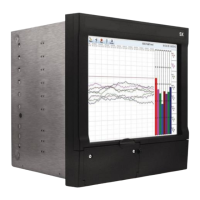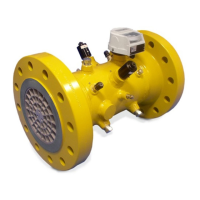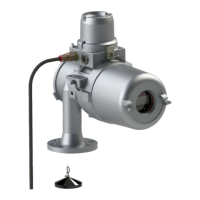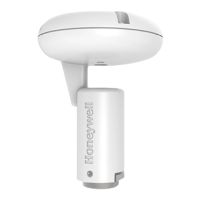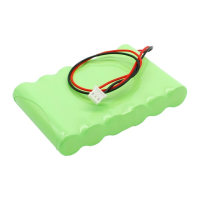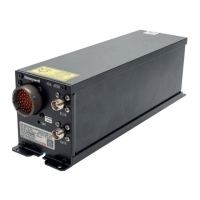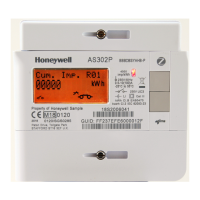4 Honeywell Sensing and Control
Signal Conditioning, Self Calibrating Digital Indicators
Rev. G, 008-0608-00
Chapter 2 Getting Started Quickly
2.1 Locate Required Parts and
Information
The following items are required to set up an SC Series instru-
ment with your transducer:
• SCSeriesinstrument
• Transducersthataretobeconnectedtotheinstrument
• Foreachtransducertobeconnectedtotheinstrument,
a connecting cable. This cable will have a 12-pin, green,
plastic connector on one end and the transducer’s mating
connector on the other end. Usually, this cable is ordered
along with the instrument and transducer.
• Iftheconnectingcablewasnotorderedwiththeinstrument,
you may need to make this cable.
• Thetransducer’sCalibrationRecordorCerticateofCalibra-
tion.
• TheCustomerInformationSheetthatshippedwithyour
instrument. This sheet describes which cards are installed in
each channel.
• Powercordfortheinstrument.
2.2 Connect the Transducer to the
Correct Channel of the Instrument
For each transducer, attach its connecting cable to the trans-
ducer, and then to the correct 12-pin channel-connector on the
instrument.
The Customer Information Sheet indicates which serial numbered
transducer is to be connected to each channel of the instrument.
If the instrument and transducer(s) were not purchased with a
connecting cable, you may need to make this cable. For the
transducer’s pin connections, see that transducer’s calibration
record. For the pin connections for that channel of the instru-
ment, see the appropriate chapter in this manual. For example, if
you wish to wire to a Strain-Gage Input Channel see the chapter
“Strain-Gage Input Channel” on page 26.
2.3 Turn on the Instrument
Connect the power cord between the instrument power source
and the instrument, and turn the On/Off switch on the back of the
instrument to the On position.
The instrument enters its INITIALIZE mode that lasts a few sec-
onds per channel. As each channel in the instrument is initial-
ized, the transducer’s serial number may be seen on the display
if the transducer has a Signature Calibration Module in it.
NOTICE
If the channel’s display flashes “APPLY 00000.” (or some
other load value), the instrument has detected a transducer
other than the one which was last calibrated with that chan-
nel. The instrument is prompting you to apply the requested
load to the transducer so that a “mV/V Calibration” or a “Shunt
Calibration” can take place.
After making certain that the correct transducer is connected
this channel, press the [ENTER] button after you have applied
the requested load to perform the calibration.
NOTICE
If the instrument displays error code 57 or 68, it has detected
a transducer other than the one which was last calibrated with
that channel. Furthermore, the channel cannot perform an
automatic calibration because its calibration type has been
set to “Known Load Calibration”.
Either re-connect the correct transducer to the channel, or
see “CALIBRATION TYPE Menu Item” on page 31 to select an-
other calibration type.
When the instrument enters its normal operating mode (RUN
mode), you will see the following format on the front panel dis-
play:
1p 00000. PSIG ¸
where:
• Channel number: “1” is the channel number.
• Value type: The next character indicates the nature of the
following value. A blank character indicates the tracking
value. The instrument is “tracking” the signal, continuously
updating the display in response to the signal from the trans-
ducer.
A “p” character indicates the peak value (highest value
seen since the [CLEAR] button was last pressed).
A “q” character indicates the valley value (lowest value seen
since the [CLEAR] button was last pressed).
• Data value: “00000.” displays the value from the transducer
in engineering units.
• Units label: “PSIG” indicates the engineering units being
used (up to 4 characters).
• Tare indicator: A “¸“ symbol indicates tare is off; a “®“ sym-
bol indicates tare is on.
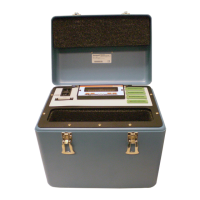
